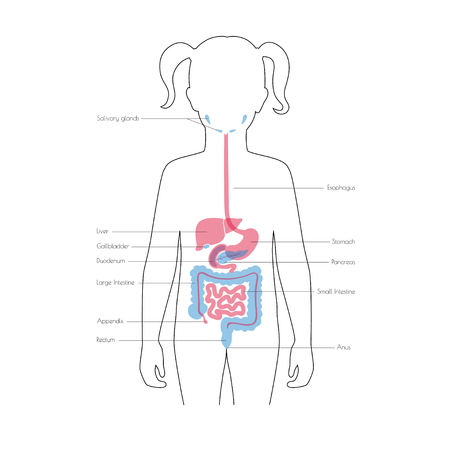Introduction to Back Pain in the UK
Back pain is a pervasive health concern across the United Kingdom, affecting a significant proportion of the population at some stage in their lives. According to recent NHS statistics, approximately one in six Britons report experiencing back pain at any given time, making it one of the leading causes of disability and work-related absence nationwide. The impact of back pain extends beyond physical discomfort, often resulting in reduced quality of life, mental health challenges, and economic costs due to lost productivity. Typical presentations among British patients range from acute lower back pain associated with manual labour or sedentary office work, to chronic conditions exacerbated by ageing, obesity, or poor posture. Common risk factors identified within local health data include lack of regular physical activity, occupational strain—particularly among those working in healthcare, construction, and transportation sectors—and underlying health conditions such as arthritis or osteoporosis. These patterns highlight the necessity for evidence-based management approaches tailored to the unique needs and lifestyles of British patients.
2. Evidence-Based Guidelines and NHS Recommendations
In the United Kingdom, the management of back pain is strongly influenced by evidence-based guidelines, most notably those issued by the National Institute for Health and Care Excellence (NICE). These guidelines are specifically tailored to ensure that British patients receive care that is both effective and relevant to the realities of NHS practice. The NICE recommendations serve as a benchmark for clinicians across England, Scotland, Wales, and Northern Ireland, ensuring consistency in diagnosis, treatment, and patient education within local healthcare settings.
NICE Guidelines: Key Components
The NICE guidelines for low back pain and sciatica (NG59) advocate a stepwise approach to management, reflecting the latest evidence on clinical effectiveness and patient safety. The guidance emphasises:
- Assessment: Conducting thorough assessments to rule out serious underlying conditions (red flags).
- Self-management: Encouraging patients to remain active and providing advice on self-management strategies.
- Non-pharmacological therapies: Recommending physical therapies such as exercise programmes and manual therapy as first-line treatments.
- Pharmacological options: Limiting medication use; paracetamol alone is not recommended, with NSAIDs considered only after careful risk assessment.
- Surgical interventions: Reserved for specific cases where conservative management has failed and symptoms are severe.
Applicability within UK Healthcare Settings
The practical implementation of these guidelines within NHS contexts involves multidisciplinary collaboration among GPs, physiotherapists, pain specialists, and community support services. The following table illustrates how core NICE recommendations translate into everyday practice within the NHS:
| NICE Recommendation | Application in NHS Settings |
|---|---|
| Promote self-management and activity | GPs provide educational materials; referrals to NHS-backed digital resources or local support groups |
| First-line physical therapies | Direct access or referral to NHS physiotherapy services; community-based exercise programmes |
| Cautious use of medications | Medication reviews during GP consultations; monitoring for side effects in line with NHS safety protocols |
| Surgical intervention only if indicated | Referral to specialist spinal clinics after MDT review; adherence to shared decision-making practices |
Conclusion: Ensuring Consistency in Care Delivery
NICE guidance underpins a unified approach to back pain management throughout the UK. Its evidence-based recommendations enable healthcare professionals to deliver safe, effective, and patient-centred care tailored to the specific needs of British patients within NHS structures. This ensures equitable access to best-practice interventions irrespective of geographical location or local resource constraints.

3. Physical Therapy and Conservative Interventions
Within the UK, physical therapy remains a cornerstone of evidence-based back pain management, particularly within NHS trusts and primary care settings. Physiotherapists employ a range of tailored strategies grounded in clinical research to address both acute and chronic presentations. Among the most widely recommended approaches is manual therapy, which encompasses spinal mobilisation, manipulation, and soft tissue techniques. These interventions are often complemented by localised exercise programmes specifically designed to improve strength, flexibility, and functional capacity.
Physiotherapy Strategies in British Practice
In British primary care, physiotherapy begins with a thorough assessment aligned with NICE guidelines, ensuring interventions are matched to individual needs and clinical presentation. Commonly employed modalities include targeted stretching, core stabilisation exercises, and progressive strengthening routines. Education around posture and ergonomics is routinely integrated to empower patients with self-management skills relevant to daily life in the UK context.
Manual Therapy Techniques
Manual therapy remains a valued component within NHS physiotherapy departments. Practitioners utilise joint mobilisation and manipulation to alleviate pain, improve mobility, and facilitate engagement in active rehabilitation. While these techniques are not universally indicated for all patients, they are selectively applied based on clinical indications and patient preferences.
Localised Exercise Programmes
Exercise prescription is highly individualised across British healthcare settings. Programmes often focus on lumbar stabilisation, gluteal activation, and graded aerobic conditioning. Group-based classes—such as those run through community health centres or NHS-funded schemes—provide social support and structured progression under professional supervision. This approach aligns with UK public health priorities promoting activity as a means of preventing long-term disability from back pain.
4. Psychological and Multidisciplinary Approaches
The management of back pain in Britain increasingly recognises the pivotal role of psychological and multidisciplinary approaches, reflecting evidence-based best practice. Psychological interventions, particularly cognitive behavioural therapy (CBT), have demonstrated significant benefits for patients experiencing persistent back pain. CBT addresses maladaptive beliefs and behaviours related to pain, helping individuals to develop more adaptive coping strategies, reduce distress, and improve overall functioning.
The Role of Cognitive Behavioural Therapy (CBT)
CBT is supported by robust clinical guidelines in the UK, such as those from NICE (National Institute for Health and Care Excellence), which recommend it as a core component for chronic pain management. The British approach emphasises tailored interventions that consider both the psychological and physical aspects of back pain. Patients referred for CBT may receive individual or group-based sessions aimed at:
- Modifying negative thought patterns about pain
- Developing effective pain coping mechanisms
- Enhancing activity levels despite discomfort
- Improving mental health outcomes such as anxiety and depression
The Importance of Multidisciplinary Pain Management Teams
In the UK, multidisciplinary teams (MDTs) are integral to delivering comprehensive back pain care. These teams typically comprise physiotherapists, psychologists, occupational therapists, pain consultants, and specialist nurses who collaborate to formulate personalised treatment plans. The MDT model ensures that physical, psychological, and social factors influencing pain are addressed holistically.
Key Components of Multidisciplinary Pain Management in Britain
| Team Member | Role in Back Pain Management |
|---|---|
| Physiotherapist | Leads exercise programmes, posture correction, manual therapy |
| Pain Specialist Nurse | Coordinates care, provides education and medication support |
| Pain Consultant | Offers medical assessment, advanced pain interventions |
| Psychologist/CBT Therapist | Delivers psychological therapies including CBT and mindfulness-based approaches |
| Occupational Therapist | Supports return to work and daily function adaptations |
Cultural Considerations for British Patients
The British healthcare context places a strong emphasis on accessibility through the NHS and community-based services. Multidisciplinary clinics often operate within NHS Trusts or local community health centres, making these services readily available to diverse populations across England, Scotland, Wales, and Northern Ireland. Furthermore, public health campaigns frequently encourage early engagement with psychological support for chronic back pain, reducing stigma and promoting positive outcomes.
5. Medications and Interventional Treatments
When it comes to managing back pain in the UK, evidence-based pharmacological and interventional strategies play a significant role, especially for patients who have not responded to first-line non-pharmacological therapies. The National Institute for Health and Care Excellence (NICE) provides detailed guidance on the rational use of medications and procedures, aiming to maximise benefit while minimising potential harm.
Pharmacological Therapies: What Works?
The latest NICE guidelines advise against routine prescription of opioids, gabapentinoids, and antidepressants for chronic primary low back pain due to limited efficacy and risk of dependency. Instead, simple analgesics such as paracetamol are no longer recommended as monotherapy. Non-steroidal anti-inflammatory drugs (NSAIDs), like ibuprofen or naproxen, are suggested for short-term use if there are no contraindications, always at the lowest effective dose and for the shortest possible duration. Muscle relaxants may be considered in acute cases under medical supervision but are not routinely advised for long-term use.
Prescription Practices in the UK Context
British GPs typically follow a stepped approach to prescribing, beginning with NSAIDs after a careful assessment of gastrointestinal and cardiovascular risks. Where medication is deemed appropriate, clinicians are encouraged to review patient response regularly and avoid polypharmacy. There is also increasing emphasis on shared decision-making, ensuring patients understand both the benefits and limitations of drug therapy within a broader self-management framework.
Interventional Procedures: Evidence and Application
For selected individuals with persistent severe symptoms that do not respond to conservative measures, interventional treatments may be offered. NICE supports the use of image-guided spinal injections such as nerve root blocks or facet joint injections only in specific circumstances—primarily for those with radicular pain (sciatica) rather than non-specific back pain. Radiofrequency denervation is another option considered for chronic facet joint pain when other interventions have failed.
Cautious Use and Ongoing Review
Importantly, all interventional procedures are reserved for carefully selected patients after multidisciplinary assessment. These interventions are generally provided within specialist pain clinics across the NHS, ensuring rigorous adherence to safety protocols and ongoing evaluation of effectiveness.
In Summary
The British approach to pharmacological and interventional management of back pain is characterised by prudent prescribing, close monitoring, and strict patient selection for invasive procedures—reflecting the commitment to evidence-based care tailored to patient safety and optimal outcomes.
6. Patient Education and Self-Management
Empowering British patients to take an active role in managing their back pain is a cornerstone of modern, evidence-based care. The NHS promotes a variety of patient-focused strategies that encourage self-management, aiming to improve outcomes and reduce reliance on medical interventions.
NHS-Backed Educational Resources
The NHS provides comprehensive educational materials both online and in print, guiding patients through the basics of spinal anatomy, causes of back pain, and practical advice for daily management. These resources are tailored to the UK context, highlighting local healthcare pathways and ensuring alignment with NICE guidelines. Patients are encouraged to access the NHS website or speak directly with their GP for trustworthy information, helping them make informed decisions about activity levels, pain relief methods, and when to seek further medical help.
Digital Tools for Self-Management
Digital health tools have rapidly become part of mainstream back pain care in the UK. Mobile apps such as myHealth London and NHS-endorsed platforms offer guided exercise videos, progress tracking, and personalised reminders. These tools can help British patients adhere to rehabilitation plans outside clinic settings and foster long-term healthy habits. Many digital resources also feature symptom checkers or direct links to NHS 111, ensuring timely escalation if red flag symptoms appear.
Community Support Groups
Support groups—both online forums and local community meet-ups—are increasingly recognised as valuable assets in self-management. Organisations such as BackCare UK provide peer-led support groups across Britain, where individuals share experiences and coping strategies. Participation in these groups has been shown to reduce feelings of isolation, increase motivation for self-care activities, and enhance overall wellbeing.
Cultural Relevance for British Communities
Effective patient education recognises cultural nuances within British communities. For example, back pain advice is often integrated into workplace wellness programmes or local leisure centres, reflecting the UKs emphasis on community-based health promotion. Furthermore, many materials are available in multiple languages and accessible formats to serve the diverse population across England, Scotland, Wales, and Northern Ireland.
Conclusion: Empowering Patients Through Knowledge
In summary, patient education and self-management are fundamental aspects of evidence-based back pain management in the UK. With the support of NHS-endorsed resources, innovative digital tools, and community networks, British patients are better equipped to manage their symptoms effectively and maintain an active lifestyle despite back pain challenges.
7. Future Directions and Ongoing Challenges in the UK
The landscape of evidence-based back pain management in the UK continues to evolve, yet several critical gaps and challenges persist. Despite advances in clinical practice guidelines and access to multidisciplinary care, there remains significant variation in the implementation of best practices across NHS trusts and localities. This inconsistency can lead to unequal patient outcomes, with certain populations—such as those in rural or economically deprived areas—facing barriers to timely and effective interventions.
Gaps in Current Practice
A key issue is the underutilisation of non-pharmacological interventions, such as physiotherapy and psychological support, which are strongly supported by recent NICE guidelines. Many British patients still receive unnecessary imaging or prolonged medication prescriptions instead of early referral to evidence-based conservative treatments. Furthermore, there is a need for better integration between primary and secondary care services to ensure seamless patient journeys and reduce fragmented care.
Integrating New Evidence-Based Technologies
The potential for digital health innovations—such as tele-rehabilitation platforms, wearable monitoring devices, and AI-driven decision support tools—is increasingly recognised within the UK healthcare system. These technologies could improve access to specialist advice, particularly for patients in remote regions or those with limited mobility. However, widespread adoption requires robust evidence of cost-effectiveness, user acceptability, and data security tailored to the British regulatory environment.
Addressing Health Inequalities
Health inequalities remain a pressing concern in British back pain management. Socioeconomic status, ethnicity, and geographical location significantly influence both the prevalence of back pain and access to high-quality care. Targeted public health initiatives—such as community-based education programmes and culturally adapted self-management resources—are essential for reducing disparities. Policymakers must prioritise investment in underserved areas and promote inclusive research that reflects the diversity of the UK population.
Looking Ahead
Ongoing collaboration among clinicians, researchers, policymakers, and patient advocacy groups will be vital for driving improvements in back pain management. The future direction should focus on standardising care pathways, embracing innovative technologies responsibly, and ensuring that all British patients—regardless of background—can benefit from truly evidence-based approaches. Addressing these ongoing challenges will require sustained commitment at both national and local levels.


